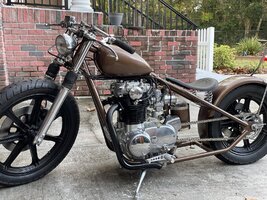Long time lurker, first post. I just wrapped this one up and have a ton of smoke coming from the right side exhaust. It kicks and fires up after 3-4 kicks. Oil is getting into the right side somehow. In searching it looks like it’s typically rings, valve stem seals, valve guides, or some combination.
I did a top end rebuild that involved all new gaskets, cam chain and guides, new rings, valve guide seals, and other typical consumables. During tear down nothing seems concerning. Spot build up but not a ton. No damages to cylinders or pistons. Valve train looked fine too. Nothing way out of spec.
For diagnosis I got 145 on both cylinders. No visible oil leaks outside the engine. The right exhaust is about 1-2 tablespoons of oil in it. I added some to the tappet cover to see if it’d drip down the valve stem but nothing visible. I’m assuming I’m looking to do valve seals again since it’s the easiest but looking for guidance or other diagnosis steps to take.
Thanks!!
I did a top end rebuild that involved all new gaskets, cam chain and guides, new rings, valve guide seals, and other typical consumables. During tear down nothing seems concerning. Spot build up but not a ton. No damages to cylinders or pistons. Valve train looked fine too. Nothing way out of spec.
For diagnosis I got 145 on both cylinders. No visible oil leaks outside the engine. The right exhaust is about 1-2 tablespoons of oil in it. I added some to the tappet cover to see if it’d drip down the valve stem but nothing visible. I’m assuming I’m looking to do valve seals again since it’s the easiest but looking for guidance or other diagnosis steps to take.
Thanks!!
Attachments
Last edited:

